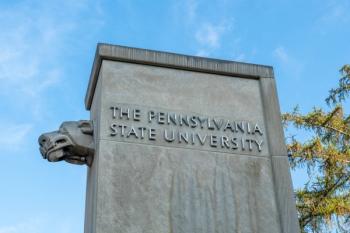
New Study Demonstrates LIBS as a Promising Tool for Cement Content Analysis
Key Takeaways
- LIBS offers a non-destructive, accurate method for measuring cement content in concrete, overcoming traditional limitations.
- The technique enables rapid, in situ analysis by creating a spatially resolved chemical map of concrete components.
Researchers in Germany have demonstrated in the journal Cement and Concrete Research that laser-induced breakdown spectroscopy (LIBS) offers a fast, accurate, and non-destructive method for estimating cement content in concrete.
Currently, measuring cement content in concrete is a destructive process. To make this laboratory procedure less destructive, a team of researchers in Germany led by Tobias Völker of Federal Institute for Materials Research and Testingexplored the applicability of a new laser-induced breakdown spectroscopy (LIBS) method that can estimate cement content with high spatial resolution and accuracy. This study, published in the journal Cement and Concrete Research, therefore demonstrates a more efficient and non-destructive alternative method to measure cement content (1).
What is concrete and why is it important?
Concrete is an important material in the construction industry, where it is used to build the foundations for single-family homes, buildings, and other structures. It is a composite material whose properties depend heavily on its composition (1,2). It is a mixture of paste aggregates (2). The cement content, which is a key determinant of strength, durability, permeability, and workability, plays a crucial role in construction quality, structural integrity, and long-term maintenance (1).
However, determining cement content in existing structures remains an ongoing challenge. This difficulty is because traditional methods have prohibitive limitations.
“Traditional methods for estimating the cement content face limitations,” the authors wrote in their study (1). “These include the need for comprehensive chemical and solubility knowledge, extensive sample preparation, and their time-consuming and destructive nature.”
What did the researchers do in their study?
In their study, the research team investigated whether LIBS can be used for rapid, in situ concrete analysis. LIBS, which is more commonly used in elemental analysis across metallurgy and environmental science, operates by firing a focused laser pulse at the material’s surface (1). This process produces a plasma whose emitted light reveals its elemental composition (1). By scanning across the concrete surface, LIBS can build a spatially resolved chemical map, enabling the differentiation of components such as cement paste, aggregates, and voids.
To control the limitations of their method, the team created mesoscale concrete models. Doing so allowed the team to identify key parameters, such as spatial resolution, measurement area, and boundary effects, that influence accuracy (1). Under the optimized conditions, LIBS achieved a relative error margin of approximately 2% when estimating cement content in these models (1). However, the researchers admitted that discretization errors arose from rasterized surface measurements (1).
The next step of their experimental process was to test their method on concrete samples. The research team combined principal component analysis (PCA) with density-based spectral clustering for this part, enabling clearer separation between different phases of the concrete. Ultimately, the method demonstrated an average relative error of approximately 8%, which represents an improvement over alternative, traditional methods (1).
What are the key takeaways from this study?
There are several key takeaways from this study. First, the study indicates that LIBS could be used in the future to estimate aggregate and void content, as well as to refine measurements of the water-to-cement ratio, which is a critical parameter in determining concrete’s strength and durability (1). The researchers also highlight the need for standardized reference methods for image-based analysis to improve the reproducibility of LIBS data across laboratories and field conditions (1).
The second takeaway is that the ability of LIBS to combine accuracy and speed with little preparation allows for real-time, on-site concrete analysis. This could help accelerate monitoring construction quality for future projects in the future, allowing construction managers to diagnose aging infrastructure and make buildings safer (1).
More field experiments are needed to validate the application of LIBS in this space, but this study indicates that using this technique in construction is not far off from wider adoption.
References
- Völker, T.; Mensing, F. M.; Krushwitz, S. Estimation of Cement Content in Concrete by Spatially Resolved Laser Induced Breakdown Spectroscopy. Cem. Con. Res. 2025, 189, 107714. DOI:
10.1016/j.cemconres.2024.107714 - Concrete State, Start With the Basics. Concrete State. Available at:
https://www.concretestate.org/concrete-basics.html (accessed 2025-11-13).
Newsletter
Get essential updates on the latest spectroscopy technologies, regulatory standards, and best practices—subscribe today to Spectroscopy.





